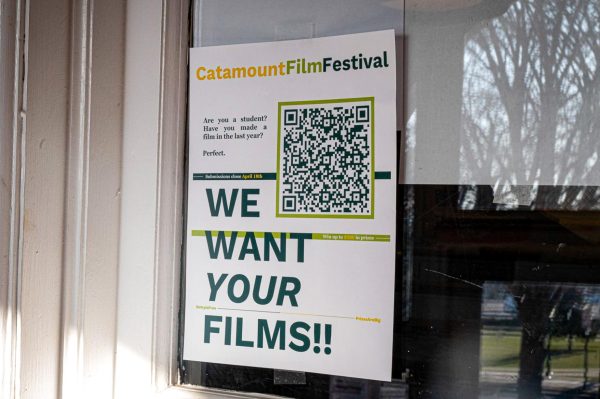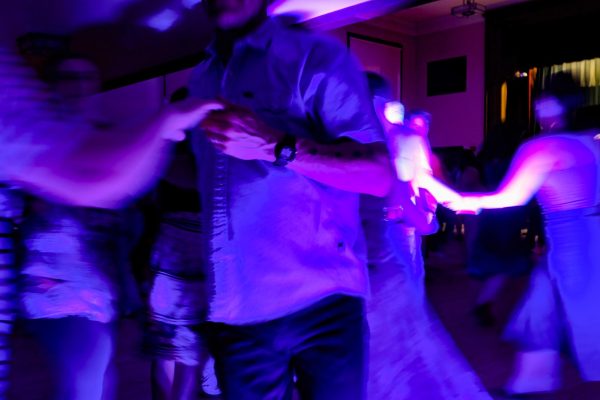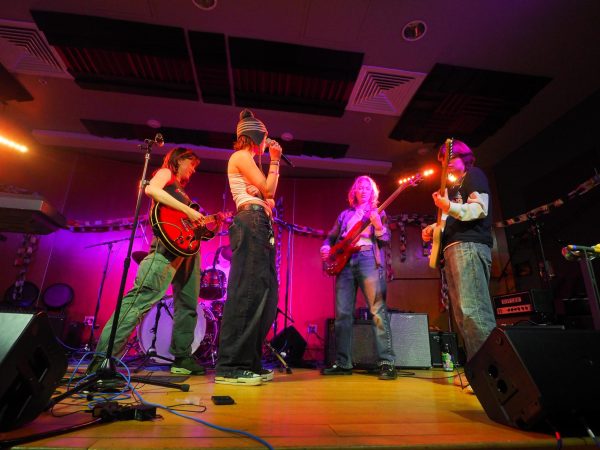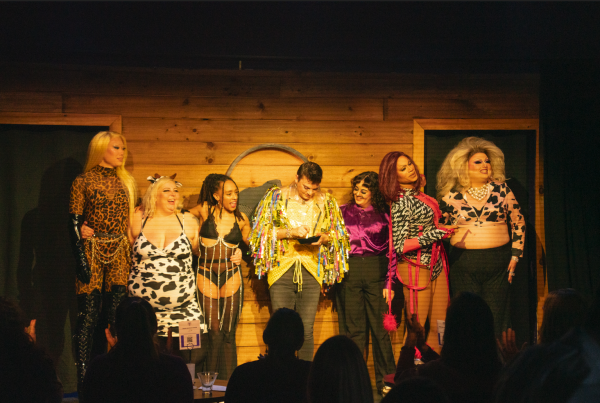Brooklyn artist presents on environment and arts
Imagine creating a piece of art made from everything you own, then dragging it around New York City to represent all the waste and things you carry. Mary Mattingly, an artist from Brooklyn, New York, did exactly that.
Students and the greater Burlington community filled the Livak Ballroom in the Davis Center Thursday Apr. 21 to listen to Mattingly talk about her artwork, which she describes as “sculptural ecosystems,” according to her website.
“I was familiar with her photos,” senior lecturer Cami Davis said. “As I looked further into her work, I recognized that she was a perfect for our Earth Week keynote because of the transdisciplinary nature of her work, making it relevant across campus.”
First-year Dominique Boccanfuso said she was impressed with Mattingly’s work.
“I found the art itself most interesting; I love how elaborate it was,” Boccanfuso said. “There were so many layers to her work and so many different elements, such as architecture and science, that contributed to her art.”
Mattingly uses her artwork as an element to relate messages about sustainability and the impact humans have on the environment.
Many of her projects aim to have the least environmental impact possible and to give back to the community.
Mattingly’s current project is named “Swale” and is a “floating food forest” in New York. Her goal through this project is to have a source for people in the community to use freely, and have a source of healthy, fresh food.
Another piece Mattingly discussed during the event was her dome-like creation, called “The Waterpod,” in which she will live for six months.
Mattingly’s initial goal was to make the barge as sustainable and habitable as possible by including features such as a garden, which could provide her with the food and resources she needed to survive. She began with the idea to solely live on what the boat could provide her.
Even though Mattingly had initially decided to live solely on what was already on the barge, she realized her friends would be coming on and off, bringing things from the outside onto the installment. She decided to incorporate whatever was brought onto the barge into the installment, including trash.
“The level of engagement with ideas from the audience, as well as the conversations upon leaving the Davis Center, made this event an overwhelming success,” Davis said. “I am inspired to work on making this an annual event and would love to work on other partnerships in the future,” she said.






